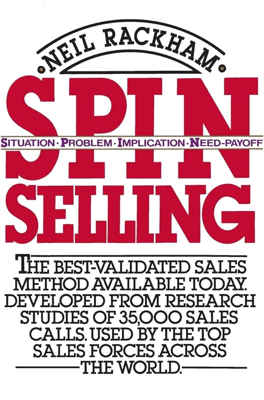Summary
Introduction to SPIN Selling Neil Rackham's "SPIN Selling" introduces a revolutionary sales method based on extensive research involving 35,000 sales calls. Traditional sales techniques, which emphasized aggressive closing tactics and handling objections, were found ineffective in complex sales scenarios. Instead, Rackham proposes the SPIN technique, which stands for Situation, Problem, Implication, and Need-payoff, aimed at understanding and addressing customer needs more effectively.
Key Concepts of SPIN Selling - Situation Questions: Gather facts about the customer’s situation. Useful but should be used sparingly to avoid boring the customer. - Problem Questions: Identify the customer's current challenges. These are crucial for setting the stage for deeper insights. - Implication Questions: Explore the consequences of the customer’s problems, enhancing the customer's perception of urgency. - Need-payoff Questions: Encourage the customer to consider the benefits of solving their problem, leading to a more positive and constructive dialogue.
These types of questions help sales professionals guide conversations with customers towards identifying and solving real problems, which is especially effective in larger, more complex sales scenarios.
Investigation Over Closing Rackham debunks the traditional focus on closing techniques, showing through his research that successful sales are often the result of effective need identification and relationship building, rather than aggressive closing tactics. In complex sales, customers are more responsive to salespeople who can demonstrate a deep understanding of their needs and offer tailored solutions.
The Role of Features, Advantages, and Benefits - Features: Neutral information about the product that, when used prematurely, can bore or distract the customer. - Advantages: Show potential usefulness but do not directly tie to specific customer needs. - Benefits: Directly address an explicitly stated need, making them most effective in influencing customer decisions in larger sales.
Benefits are especially pivotal as they link directly to the customer’s needs uncovered through the SPIN questioning process, reinforcing the importance of tailored solutions over generic selling points.
From Theory to Practice Implementing SPIN Selling requires practice and adaptation to each sales situation. Rackham emphasizes the importance of progressing from understanding and utilizing Situation and Problem Questions to mastering Implication and Need-Payoff Questions for optimal sales effectiveness.
Salespeople are encouraged to continuously refine their questioning skills, align discussions with explicit customer needs, and avoid common pitfalls like focusing too heavily on product features or using ineffective closing techniques.
Conclusion SPIN Selling shifts the focus from traditional selling techniques to a consultative approach that prioritizes customer needs. By understanding and implementing the SPIN questioning sequence, sales professionals can improve their effectiveness in complex sales, leading not only to increased sales success but also to stronger customer relationships.
